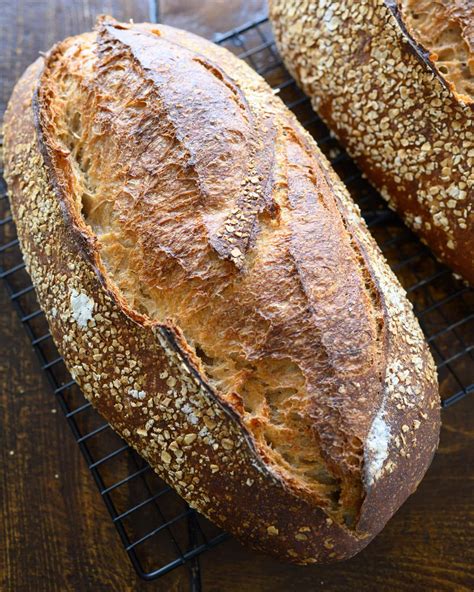The Ultimate Guide to Homemade Bread: From Dough to Delicious
Baking bread at home might seem daunting, but with the right recipe and a little patience, you can create a loaf that's far superior to anything you'll find in a store. This guide will walk you through making delicious, artisanal bread from scratch, covering everything from ingredient selection to baking techniques. Let's get started!
Choosing Your Ingredients: Quality Matters
The key to great bread lies in using high-quality ingredients. Don't skimp here!
Flour Power:
- Bread Flour: This flour has a higher protein content than all-purpose flour, giving your bread structure and a satisfying chew. It's the ideal choice for most bread recipes.
- All-Purpose Flour: In a pinch, you can use all-purpose flour, but your bread might be a bit less chewy.
Yeast: The Rising Star:
- Active Dry Yeast: This is the most common type of yeast, and it's readily available in most grocery stores. Make sure it's fresh; old yeast won't activate properly.
- Instant Yeast: This type of yeast doesn't require proofing (activating in warm water), making it a convenient option.
Salt: More Than Just Flavor:
Salt isn't just for taste; it controls yeast activity and strengthens the gluten network, contributing to a better bread texture. Don't leave it out!
Water: The Unsung Hero:
The temperature of your water is crucial. Too cold, and the yeast won't activate; too hot, and you'll kill it. Aim for lukewarm water (around 105-115°F).
The Basic Bread Recipe: A Step-by-Step Guide
This recipe makes one medium-sized loaf.
Ingredients:
- 3 cups bread flour (or all-purpose flour)
- 1 ¼ cups lukewarm water
- 1 ½ teaspoons salt
- 2 ¼ teaspoons active dry yeast (or 1 teaspoon instant yeast)
Instructions:
- Activate the Yeast (if using active dry yeast): In a large bowl, combine the lukewarm water and yeast. Let it sit for 5-10 minutes until foamy. This proves your yeast is alive and ready to work its magic.
- Combine Ingredients: Add the flour and salt to the yeast mixture. Stir until a shaggy dough forms.
- Knead the Dough: Turn the dough out onto a lightly floured surface and knead for 8-10 minutes, or until the dough is smooth and elastic. If using a stand mixer, knead with the dough hook attachment for 5-7 minutes.
- First Rise (Bulk Fermentation): Place the dough in a lightly oiled bowl, turning to coat. Cover the bowl with plastic wrap and let the dough rise in a warm place for 1-1.5 hours, or until doubled in size.
- Shape the Dough: Gently punch down the dough to release the air. Shape it into a round or oval loaf.
- Second Rise (Proofing): Place the shaped dough in a greased loaf pan or on a baking sheet lined with parchment paper. Cover and let rise for another 45-60 minutes, or until almost doubled.
- Bake: Preheat your oven to 375°F (190°C). Bake for 30-35 minutes, or until the crust is golden brown and the internal temperature reaches 200°F (93°C).
- Cool: Let the bread cool completely on a wire rack before slicing and serving. This allows the crust to crisp and the crumb to set.
Tips for Bread Baking Success
- Don't overknead: Overkneading can result in a tough loaf.
- Use a kitchen thermometer: Accurate temperature control is essential for both yeast activation and baking.
- Experiment with different flours: Once you've mastered this basic recipe, try adding whole wheat flour, rye flour, or other types of flour for added flavor and texture.
- Add your own flair: Get creative! Experiment with adding herbs, seeds, nuts, or dried fruits to your bread dough.
Baking bread is a rewarding experience. Follow these steps, and you'll be enjoying the delicious aroma and taste of homemade bread in no time! Happy baking!
